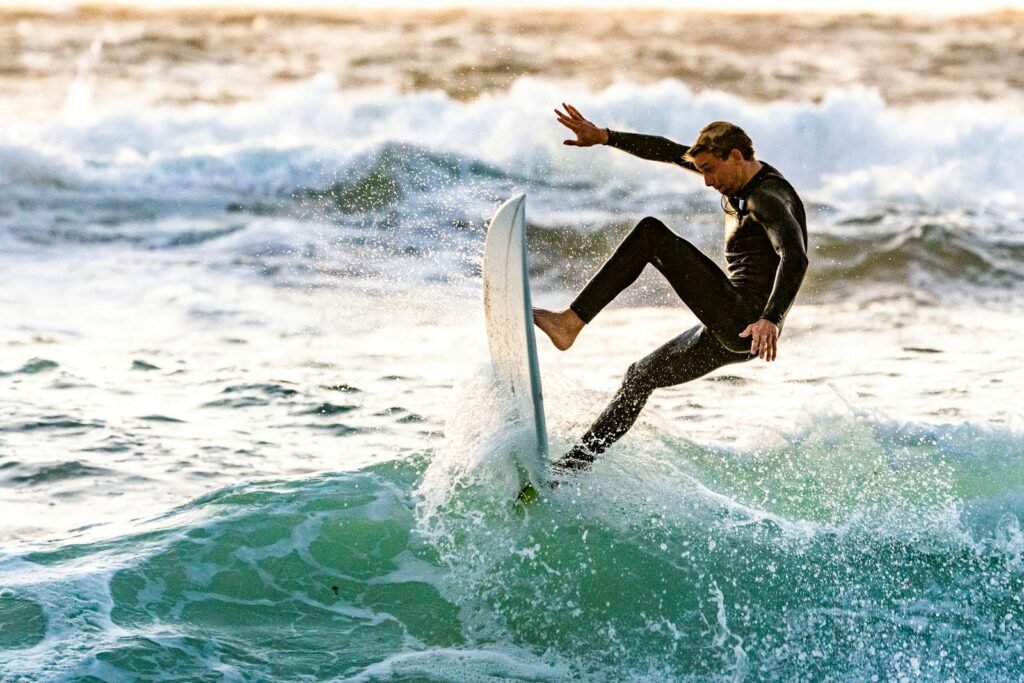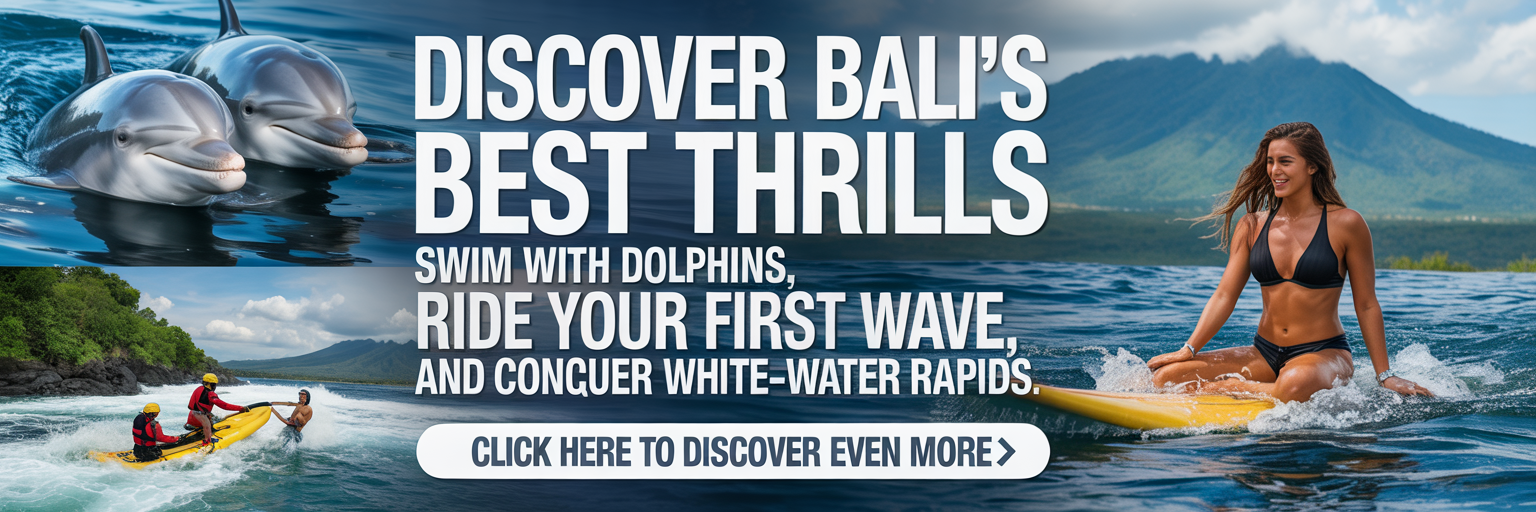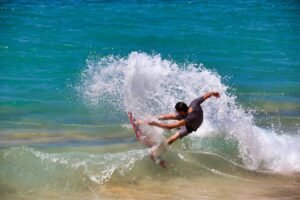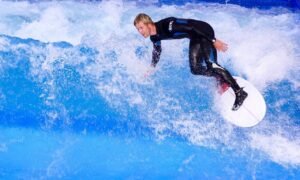Understanding the Best Time to Surf in Bali
Surfing in Bali is a favored activity among both novice and experienced surfers, but optimal conditions vary throughout the year. The island’s climate is characterized by two main seasons: the dry season and the wet season. The dry season, typically from April to October, is regarded as the best time for surfing. During this period, the southern hemisphere’s swells provide reliable, consistent waves, making it an ideal time for those looking to enjoy the sport. The average water temperature remains around 27-29 degrees Celsius, which is comfortable for extended surfing sessions.
Conversely, the wet season, from November to March, brings unpredictable weather patterns and larger storm swells. This dynamic can result in exciting conditions for advanced surfers seeking challenging waves, particularly on the eastern and northern shores. However, precautions should be taken, as the wet season also tends to attract strong currents and potential hazards. For beginners, it is advisable to stick to the dry season when ocean conditions are calmer, allowing for a safer learning environment.
In terms of tourist crowds, the best months for surfing in Bali align with the dry season. June, July, and August are peak months, meaning popular surf spots might be congested. Alternative months within the dry season, such as May and September, offer excellent wave conditions while presenting fewer crowds, allowing for a more enjoyable experience. When planning a trip to Bali for surfing, understanding these seasonal dynamics is crucial in maximizing time in the water while ensuring safety and enjoyment, regardless of skill level.
Top Surf Spots on Bali’s South Coast
Bali’s South Coast is renowned for its picturesque beaches and vibrant surf culture, making it a hotspot for surfers of all skill levels. The region boasts a variety of surf spots, each offering distinct characteristics that accommodate different surfing preferences and experiences.
One of the most famous surf locations on the South Coast is Uluwatu, recognized for its powerful waves and stunning cliffside views. The surf breaks at Uluwatu offer various difficulty levels, making it suitable for both experienced surfers and those looking to challenge themselves. The waves here are typically fast and hollow, providing an exhilarating experience for those who can handle them. Additionally, surfers should be mindful of local conditions, including tide changes, which can significantly impact wave quality.
Another popular spot is Padang Padang Beach, famously featured in surf documentaries. This surf destination is known for its consistent waves and unique reef breaks. It presents an intermediate to advanced level of difficulty due to its shallow reef and strong currents. However, for beginners, there are softer waves further down the beach. Surf schools in the area offer lessons for newcomers, ensuring a safe entry into the surfing world.
Kuta Beach, on the other hand, serves as an excellent starting point for beginners. With its gentle, rolling waves, Kuta is ideal for those who are just learning how to surf. The beach offers ample surf schools and rental shops, making it easy to find gear and guidance. Moreover, the lively atmosphere, coupled with numerous accommodations and amenities, ensures a comfortable experience for surfers and their supporters alike.
When visiting these iconic surf spots, it is crucial to respect local customs and adhere to safety guidelines. Whether you are catching your first wave at Kuta or challenging the powerful breaks at Uluwatu, understanding each spot’s unique dynamics and available resources can enhance your surfing journey on Bali’s beautiful South Coast.
Surfing the Less Crowded Spots in Bali
Bali is renowned for its surf culture, but not all waves are created equal, and many visitors flock to the most popular spots, often resulting in crowded conditions. For those looking to escape the throngs and seek out more serene surf experiences, there are several lesser-known beaches that offer not only excellent waves but also stunning scenery. Three outstanding options include Medewi, Balangan, and Bingin.
Medewi, located on the west coast, is famous for its long left-hand waves that cater to both beginners and experienced surfers. The beach tends to be less populated, making it an ideal choice for those wishing to enjoy a more tranquil surfing experience. The backdrop of lush green hills gives Medewi a picturesque charm. The best time to surf here is during the dry season, from April to September, when the swell is consistent and the winds are favorable. Accessing this hidden gem requires a bit of travel, approximately a two-hour drive from Canggu, but it is well worth the trip.
Balangan Beach offers stunning views with its dramatic cliffs and pristine waters, along with a fun right-hand wave. It is particularly appealing for intermediate surfers looking to refine their skills. The beach is relatively undeveloped, ensuring fewer people on the water. Balangan is best surfed during low to mid-tide, as it can become quite shallow at low tide. Getting there involves a 30-minute drive from Seminyak, and while facilities are limited, local warungs provide sustenance.
Bingin Beach, nestled near Uluwatu, is yet another fantastic spot for surfers seeking less crowded conditions. This beach can provide some world-class waves under the right conditions, attracting surf enthusiasts of all levels. Bingin is ideal for those willing to navigate its steep stairs leading down to the shoreline. The best conditions usually occur during the dry season, making it a great addition to any surfer’s Bali itinerary.
Surfing Etiquette and Safety Tips in Bali
When embarking on a surfing adventure in Bali, it is imperative to be aware of the established etiquette and safety guidelines that govern the local surf culture. Respecting fellow surfers enhances the communal spirit of the sport and ensures a harmonious experience on the waves. One fundamental principle of surfing etiquette is to always defer to the locals. They possess an intimate understanding of the surf conditions and wave dynamics, so showing respect by allowing them priority will not only foster goodwill but also enhance your surfing experience.
Another critical aspect is understanding the right-of-way rules. The surfer closest to the peak of the wave holds priority. Surfers must refrain from dropping in on another surfer’s wave, as this can lead to dangerous collisions. When waiting for a wave, maintaining an appropriate distance from other surfers and remaining patient is vital. Remember, calmness and respect are crucial qualities to embody in the water.
Besides etiquette, safety should also be a primary consideration. Before heading out, make it a routine to check the weather conditions and surf reports. This practice allows you to assess the surf size, wind direction, and potential hazards like rip currents. In Bali, avoiding particular surf spots known for treacherous reefs is wise, especially for less experienced surfers. Should an emergency arise while surfing, understanding the nearest landmarks and having a means of communication will prove invaluable. Identify lifeguard stations and ensure you have a buddy system in place, as surfing with a partner is always safer. By adopting these practices, surfers not only protect themselves but also contribute to a positive surfing environment for everyone involved.





